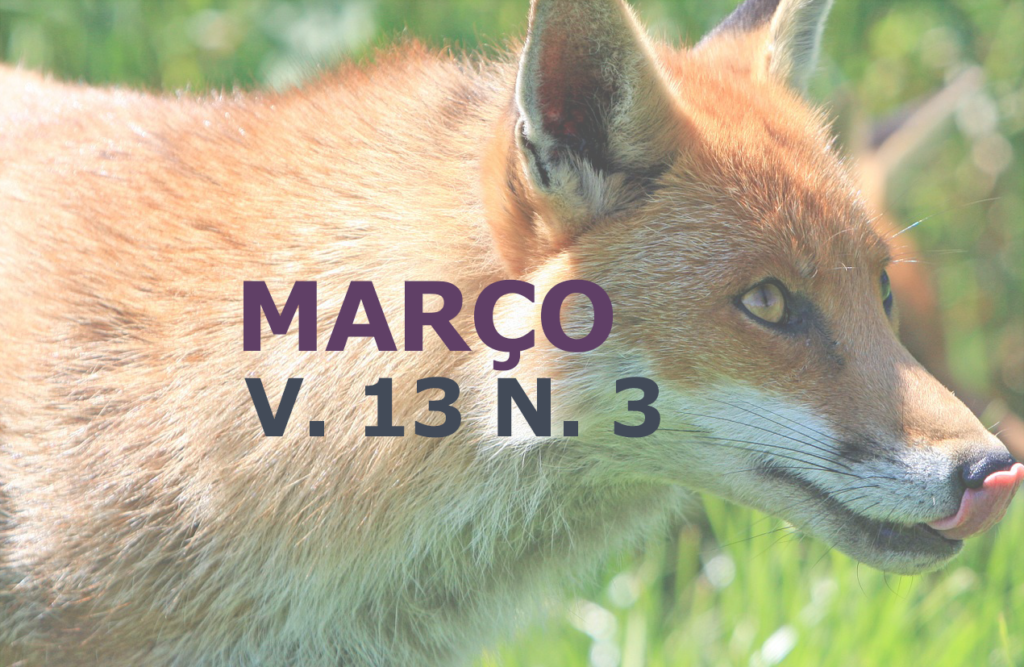Avaliação físico-química de polpas de cupuaçu, Theobroma grandiflorum Schum, industriais e artesanais
DOI:
https://doi.org/10.31533/pubvet.v13n3a300.1-6Palavras-chave:
Controle de qualidade,Bromatologia,Vitamina CResumo
A polpa da fruta é sua parte com maior importância comercial, podendo ser produzidas durante a safra, posteriormente armazenada e processada em períodos onde haja uma produção menor do fruto. O cupuaçu, Theobroma grandiflorum Schum, pode ser considerado um dos frutos mais importantes da região, tendo excelente aceitação de mercado. Por este motivo, o objetivo do trabalho foi realizar a caracterização físico-química de polpas de cupuaçu produzidas artesanalmente e industrialmente e comercializadas na cidade de Macapá, Amapá. Foram adquiridas 3 polpas produzidas artesanalmente e comercializadas em feira pública e 3 polpas produzidas industrialmente comercializadas em supermercado da cidade de Macapá. Ambas foram transportadas em caixas isotérmicas até o Laboratório de Análises Físico-químicas pertencentes ao Núcleo de Ciência e Tecnologia de Alimentos do Instituto de Pesquisas Científicas e Tecnológicas do Estado do Amapá – IEPA. Foram realizadas as análises físico-químicas de pH, sólidos solúveis totais (SST), acidez total titulável (ATT), umidade, proteína, lipídios, fibras e ácidos ascórbico (Vitamina C), todas em triplicatas. O valor de proteínas encontrado neste estudo foi de 2,59 ± 0,8 para polpas industriais e de 2,72 ± 0,3 para polpas artesanais. O valor de umidade encontrado foi de 86,73 ± 0,4 para polpas industriais e de 97,33 ± 1,3 para naturais. O pH encontrado neste estudo foi muito ácido, não apresentando diferenças, com valores de 3,34 ± 0,7 para polpas industriais e 3,67 ± 0,1 para polpas artesanais. Quanto aos sólidos solúveis, os valores encontrados no estudo foram para polpas industriais e artesanais respectivamente de 11,67 ± 1,9° Brix e 7,67 ± 3,7° Brix. Apenas as polpas artesanais estavam fora do padrão determinado que preconiza o valor de 9° Brix. As diferenças encontradas nas polpas de frutas, podem ser de origem da fruta (tais como a maturação, o solo e o sistema de produção), ou ainda do manuseio (armazenamento, processamento, acondicionamento e transporte), estas características e estes processos resultam nas variações descritas neste trabalho.
Palavras chave: Controle de qualidade, Bromatologia, Vitamina C
Downloads
Publicado
Edição
Seção
Licença
Copyright (c) 2019 Jaqueline Freitas do Nascimento, Antonio Carlos Souza da Silva Júnior, Ediluci do Socorro Leôncio Tostes, Anne do Socorro Santos da Silva

Este trabalho está licenciado sob uma licença Creative Commons Attribution 4.0 International License.
Você tem o direito de:
Compartilhar — copiar e redistribuir o material em qualquer suporte ou formato
Adaptar — remixar, transformar, e criar a partir do material para qualquer fim, mesmo que comercial.
O licenciante não pode revogar estes direitos desde que você respeite os termos da licença. De acordo com os termos seguintes:
Atribuição
— Você deve dar o crédito apropriado, prover um link para a licença e indicar se mudanças foram feitas. Você deve fazê-lo em qualquer circunstância razoável, mas de nenhuma maneira que sugira que o licenciante apoia você ou o seu uso. Sem restrições adicionais
— Você não pode aplicar termos jurídicos ou medidas de caráter tecnológico que restrinjam legalmente outros de fazerem algo que a licença permita.





